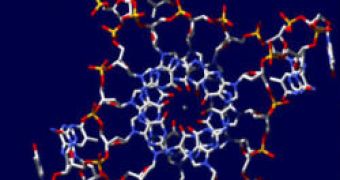Only yesterday, the scientific journal Nature Chemistry witnessed the publication of a new study stating that, contrary to popular belief, the human DNA is not limited to wrapping itself into a double helix.
Thus, it can sometimes form quadruple helixes, which are basically structures made up of four strands wrapped around one another.
For those unaware, it was back in 1953 when Cambridge researchers Francis Crick and James Watson first described the double helix DNA structure, and labeled it as the chemical code of life.
Up until now, scientists worked on the assumption that other structures such as the quadruple helix DNA are no more and no less than a curiosity, and that, rather than being found in nature, they can only form and be studied in vitro, Science News explains.
Still, their now being identified and pinned down in human cells represents a major scientific breakthrough, primarily because specialists believe that such quadruple DNA structures could eventually help them develop new and improved cancer treatments.
Apparently, these rare DNA structures mainly manifest themselves in cells that divide faster than others.
Therefore, they might be able to let researchers know whether or not one such cell is likely to become a cancerous one in the not so distant future.
“The research indicates that quadruplexes are more likely to occur in genes of cells that are rapidly dividing, such as cancer cells. For us, it strongly supports a new paradigm to be investigated -- using these four-stranded structures as targets for personalized treatments in the future,” argued Professor Shankar Balasubramanian.
“The 'quadruple helix' DNA structure may well be the key to new ways of selectively inhibiting the proliferation of cancer cells. The confirmation of its existence in human cells is a real landmark,” the professor went on to add.
This new research on human DNA was carried out by a team of scientists working with the Cambridge University.
The funding needed in order to carry out these experiments and studies was provided by Cancer Research UK, the country's leading cancer charity.

 14 DAY TRIAL //
14 DAY TRIAL //